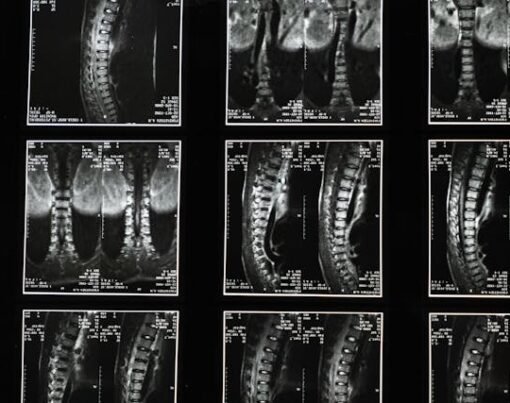In the dynamic landscape of modern medicine, the importance of ongoing training for physicians cannot be overstated. Beyond the foundational education received in medical school and residency, continuous learning and skill refinement are paramount for maintaining competence and delivering high-quality patient care. This imperative holds particularly true in fields such as hospital medicine and emergency medicine, where rapid advancements, evolving techniques, and emergent situations demand physicians to be constantly updated and adept in their practices. In this discourse, we delve into why physicians should continue to train over the years, highlighting the significance of hospitalist procedure training, participation in emergency medicine skills courses, and mastery of critical procedures like intubation.
Table of Contents
Hospitalist Procedure Training: Nurturing Proficiency in Hospital Medicine
Hospitalist procedure training stands as a cornerstone in the repertoire of skills for physicians specializing in hospital medicine. Hospitalists play a pivotal role in managing the care of patients admitted to hospitals, often encountering a diverse array of medical conditions and clinical scenarios. As healthcare practices evolve, so do the procedures and techniques employed in hospital settings. It is imperative for hospitalists to engage in continuous training to ensure proficiency in performing various procedures ranging from central line placements to lumbar punctures.
The Evolution of Hospital Medicine Practices
The landscape of hospital medicine is marked by a constant influx of technological innovations and procedural advancements aimed at enhancing patient outcomes and streamlining care delivery. Hospitalist procedure training serves as a mechanism for physicians to acquaint themselves with these innovations and refine their procedural skills accordingly. Through hands-on workshops, simulation exercises, and continuing medical education (CME) courses, hospitalists can stay abreast of the latest evidence-based practices and procedural techniques, ultimately translating into improved patient care and safety.
Simulation-Based Learning: Enhancing Procedural Competence Safely
Moreover, the incorporation of simulation-based training modalities in hospitalist procedure training programs provides physicians with a safe environment to practice and hone their skills without compromising patient safety. Simulation offers a realistic platform for physicians to familiarize themselves with uncommon or high-risk procedures, thereby bolstering their confidence and competence when encountering such scenarios in clinical practice. By embracing simulation-based training, hospitalists can mitigate the learning curve associated with novel procedures and ensure optimal patient outcomes.
Participation in Emergency Medicine Skills Courses
In parallel, the realm of emergency medicine presents its own set of challenges and exigencies that underscore the importance of ongoing physician training. Emergency departments serve as the frontline of healthcare delivery, catering to a diverse patient population with varying acuities and clinical presentations. The ability to swiftly and adeptly manage emergent situations hinges on the proficiency of emergency physicians in a multitude of skills ranging from trauma resuscitation to advanced airway management.
Nurturing Clinical Acumen through Emergency Medicine Skills Courses
Participation in emergency medicine skills courses serves as a means for emergency physicians to refine their clinical acumen and bolster their readiness to tackle emergent scenarios effectively. These courses encompass a broad spectrum of topics ranging from basic life support (BLS) and advanced cardiac life support (ACLS) to trauma management and critical care interventions. By engaging in such courses, emergency physicians can refresh their knowledge base, fine-tune their procedural skills, and stay abreast of the latest guidelines and protocols governing emergency care.
The Significance of Mastery in Intubation Procedure: A Lifesaving Intervention
Of particular significance within the purview of emergency medicine is the mastery of the intubation procedure—a critical intervention employed in the management of patients with compromised airways. Intubation necessitates a combination of cognitive skills, technical dexterity, and situational awareness to ensure successful airway management and oxygenation. However, proficiency in intubation is not merely acquired through initial training but necessitates ongoing practice and refinement to maintain competency.
Navigating the Complexity of Airway Management
The landscape of airway management is characterized by evolving techniques, equipment advancements, and clinical guidelines, necessitating emergency physicians to engage in continuous training to uphold proficiency in intubation. Furthermore, the high-stakes nature of the intubation procedure underscores the importance of regular practice and simulation-based training to mitigate the risk of adverse outcomes and ensure patient safety.
Beyond Procedural Skills: Fostering a Culture of Lifelong Learning
In addition to technical proficiency, ongoing training in intubation encompasses aspects such as teamwork, communication, and crisis resource management—essential skills that contribute to the seamless execution of the procedure in high-pressure environments. By participating in intubation workshops, simulation exercises, and quality improvement initiatives, emergency physicians can enhance their procedural competency while fostering a culture of continuous learning and patient-centered care within their practice settings.
Cultivating Professional Growth Through Lifelong Learning
Beyond the confines of specific procedural skills, the ethos of lifelong learning permeates the ethos of medical professionalism, underpinning the commitment of physicians to excellence in patient care. Lifelong training not only enhances clinical competence but also fosters a culture of adaptability, innovation, and resilience—qualities that are indispensable in navigating the complexities of modern healthcare delivery.
The Broad Spectrum of Lifelong Learning in Medicine
The ethos of continuous learning extends beyond procedural proficiency to encompass broader domains of medical practice such as evidence-based medicine, clinical research, and healthcare leadership. Physicians are entrusted with the responsibility of staying abreast of the latest medical advancements, scientific discoveries, and clinical guidelines to provide patients with the highest standard of care. Moreover, ongoing training enables physicians to adapt to evolving healthcare paradigms, technological innovations, and regulatory changes, thereby enhancing the efficiency and efficacy of healthcare delivery.
Professional Growth and Development: A Continual Journey
Furthermore, lifelong learning serves as a catalyst for professional growth and development, empowering physicians to expand their clinical expertise, pursue subspecialty training, and assume leadership roles within healthcare organizations. By embracing a culture of continuous improvement and self-reflection, physicians can cultivate a sense of professional fulfillment and contribute meaningfully to the advancement of their respective fields.
Conclusion
The imperative of ongoing physician training cannot be overstated in the context of contemporary healthcare practice. Hospitalist procedure training, participation in emergency medicine skills courses, and mastery of critical procedures such as intubation underscore the importance of continuous learning and skill refinement in ensuring excellence in patient care. By embracing a culture of lifelong learning, physicians can uphold the highest standards of clinical competence, innovation, and professionalism, thereby fulfilling their mandate as stewards of health and advocates for their patients’ well-being.










